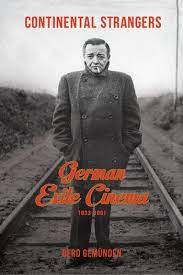Hundreds of German-speaking film professionals took refuge in Hollywood during the 1930s and 1940s, making a lasting contribution to American cinema. Hailing from Austria, Hungary, Poland, Russia, and the Ukraine, as well as Germany, and including Ernst Lubitsch, Fred Zinnemann, Billy Wilder, and Fritz Lang, these multicultural, multilingual writers and directors betrayed distinct cultural sensibilities in their art. Gerd Gemünden focuses on Edgar G. Ulmer's The Black Cat (1934), William Dieterle's The Life of Emile Zola (1937), Ernst Lubitsch's To Be or Not to Be (1942), Bertolt Brecht and Fritz Lang's Hangmen Also Die (1943), Fred Zinnemann's Act of Violence (1948), and Peter Lorre's Der Verlorene (1951), engaging with issues of realism, auteurism, and genre while tracing the relationship between film and history, Hollywood politics and censorship, and exile and (re)migration.
- Table of Contents
- Acknowledgments
- Introduction
- Part I: Parallel Modernities
- 1. A History of Horror
- 2. Tales of Urgency and Authenticity
- Part II: Hitler in Hollywood
- 3. Performing Resistance, Resisting Performance
- 4. History as Propaganda and Parable
- Part III: You Can’t Go Home Again
- 5. Out of the Past
- 6. The Failure of Atonement
- Epilogue
- Notes
- Selected Bibliography
- Index

